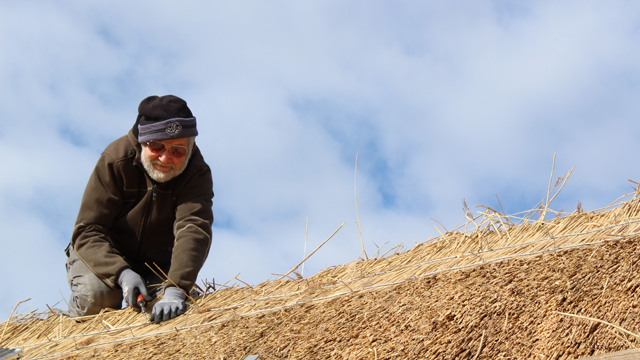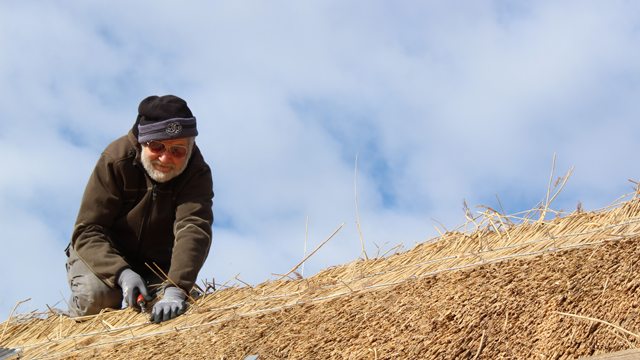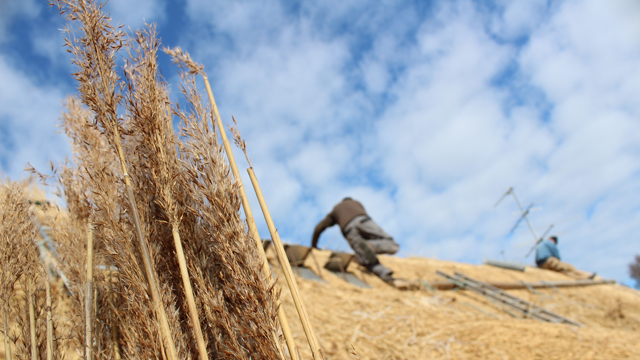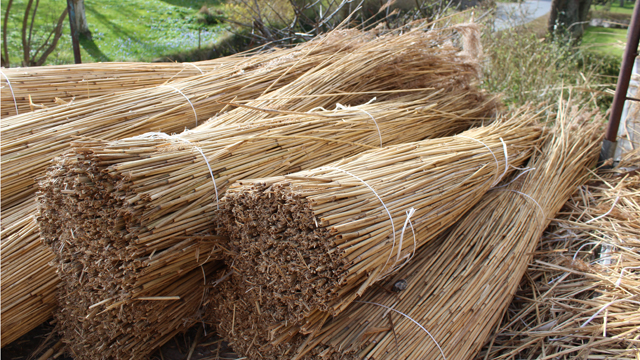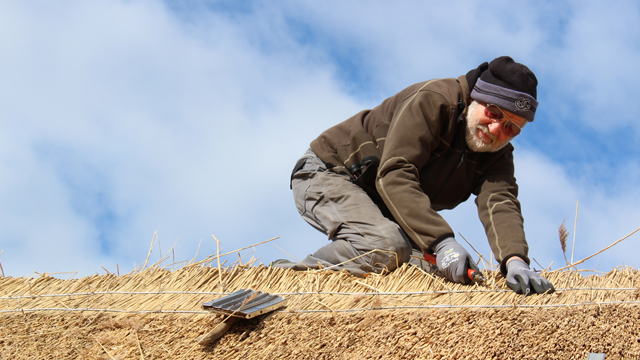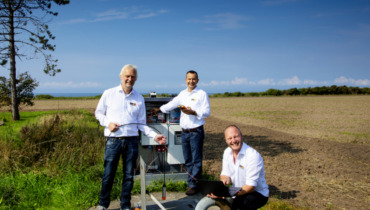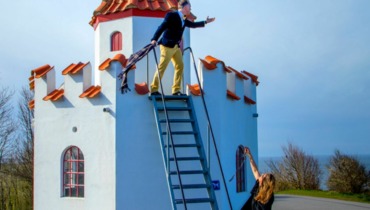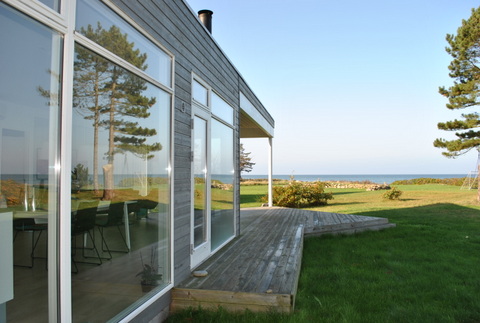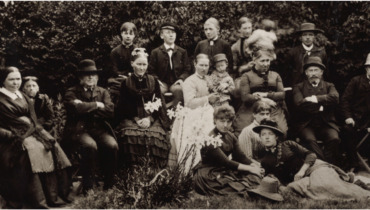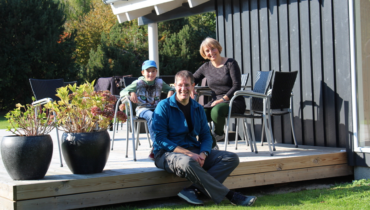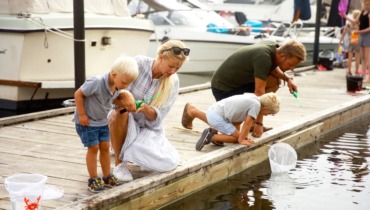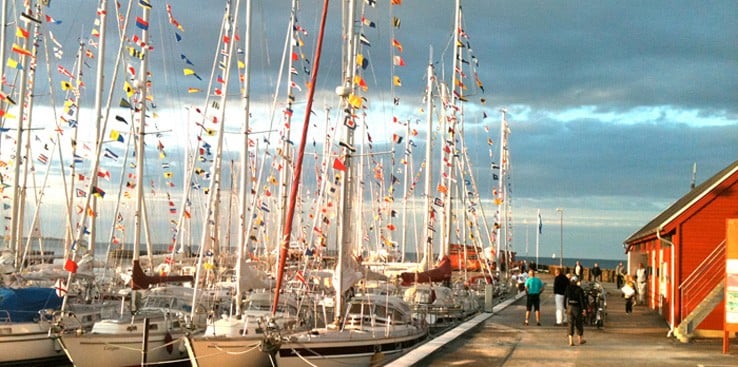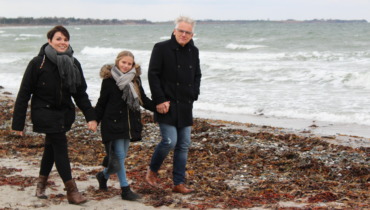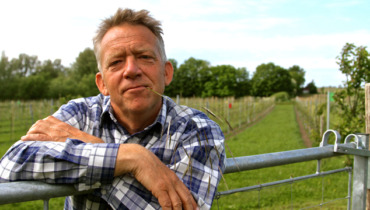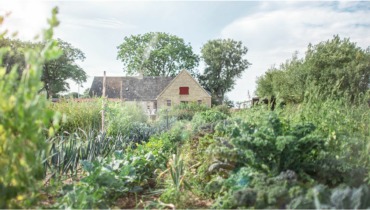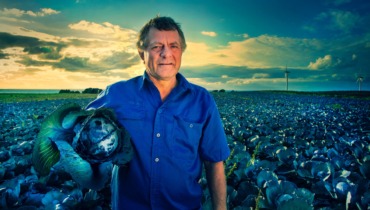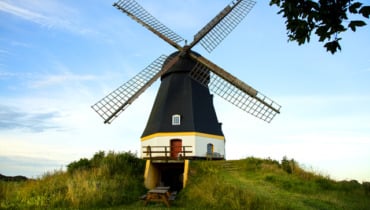The Thatcher
Originally Jan Ek was a trained accountant. He has also attended The Danish School of Journalism. But despite this background, he has been eating his lunch packets on the top of Samsø’s roofs for more than 35 years.
Numbers, Text, and Roof
Like so many other good stories, this one also starts with a girl. Or rather, the girl’s father, a house on Rømø, and a young man with craftsman skills that was eager to learn.
“Once I had a girlfriend whose father’s summer cottage on Rømø needed a new thatched roof. For several weeks I was sitting in the attic, catching the needle when it was inserted through the roof. It was there, in the dark, where it all started”, Jan recalls. In the following years, Jan expanded his thatcher horizon at Frilandsmuseet (open air museum) in Kgs. Lyngby and with different thatchers in Jutland, and then, in 1982, his life took a turn. “At that time, I was studying at The Danish School of Journalism in Aarhus, and together with my girlfriend, Mette, who later became my wife, we got the idea that it could be fun to try living on an island. I took leave from my studies and we moved to Samsø where I started thatching roofs”, Jan explains.
A Historic Craft
For almost 6,000 years, human beings have thatched their roofs, and we have to go right up to the year 2000 before roof thatching became a skilled craft in Denmark. “By tradition, it was a rural craft passed on from father to son. They used the local materials at hand, and on this island it was rye straw. The rye was harvested with a scythe, the grain was threshed, and the straws were bundled. Throughout the winter, thatchers would do the thatching little by little when farm people had time to lend a hand as they were not working in the fields anyway”, Jan explains.
Everywhere in Denmark, there are specific regional characteristics when it comes to thatched roofs. ”Because this craft has so deep, regional roots, a specific style is characteristic of most of the island. On many roofs, especially in Nordby, dormers are displaced from the front door. The story goes that it should be possible to exit through the front door without burning straw falling onto your head, if the house is on fire. Another theory is that it was to prevent hay and straw stacked in the attic from falling down on your neck when you entered and left the house. I am not convinced that either of the two theories proves to be correct”, Jan explains
10 Bananas
Now, after 35 years with reeds, needles, and wire, Jan can look back on hundreds of well-performed thatching jobs which have, to a great extent, contributed to the beauty of Samsø’s villages. “As it is, it was never our intention to get stuck here when we moved to the island in 1982. But, by accident, I have promised too much, so now I can’t get away”, Jan says with a big laugh!
Jan’s thatching skills have always met great satisfaction with his clients and according to him there have never been any problems with people paying their bills.
“On Samsø, I have never lost any money. Only once has it been necessary to send a reminder saying, “If you don’t pay within three days, I’ll send my gorillas to pull off your arms. The next day the client came with the money and 10 bananas for the gorillas”, Jan says with a last remark.
Facts about thatched roofs
• According to Jan, the most stylish thatched roofs are in Nordby and on Besser Rectory. But Østerby is also an interesting experience as it appears almost intact.
• A thatched roof lasts between 40 and 60 years.
• The reeds are clapped in place with a so-called thatching shovel. They are not cut off, as many people believe.
• More and more house owners choose to re-establish a former thatched roof which, at some point, has been replaced with other materials.
Last updated: 11/08/2020 14:12

